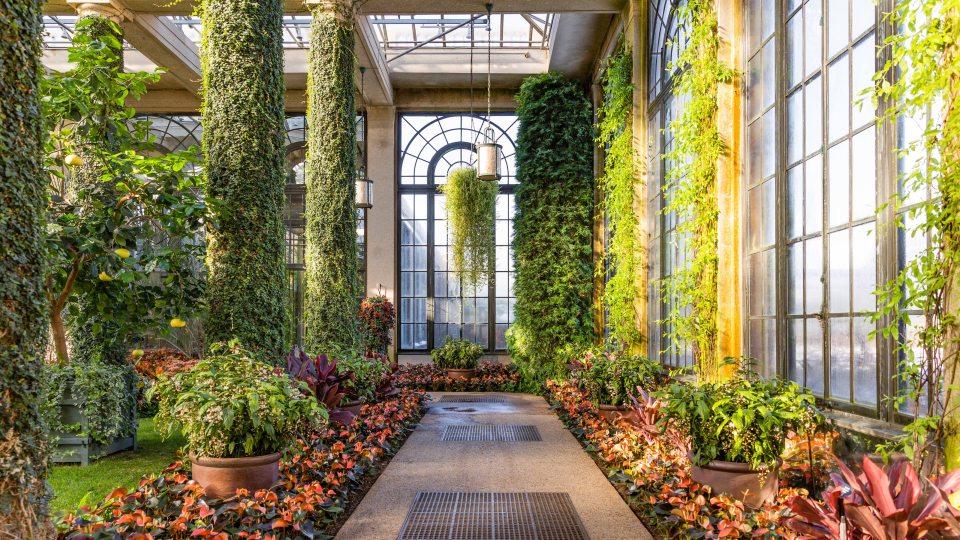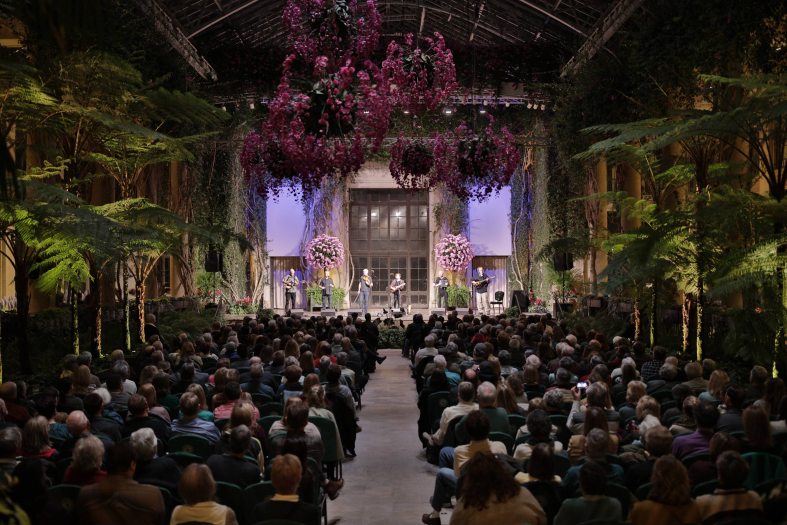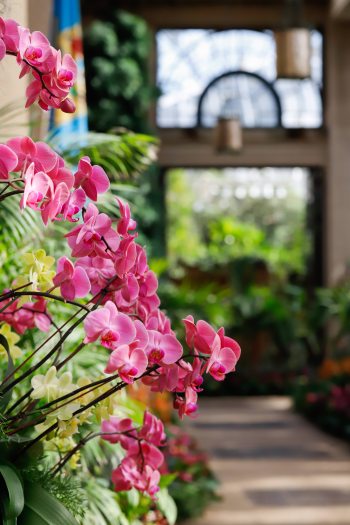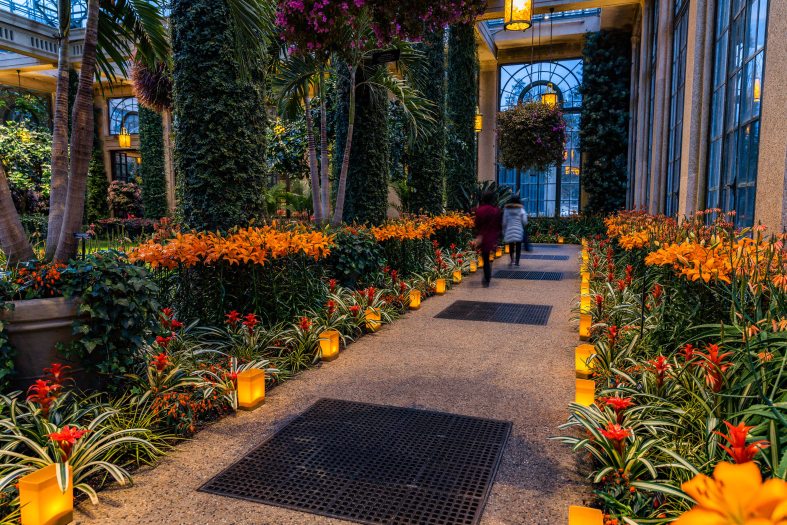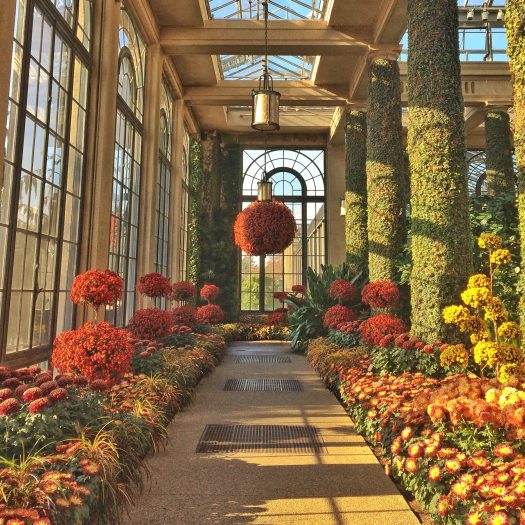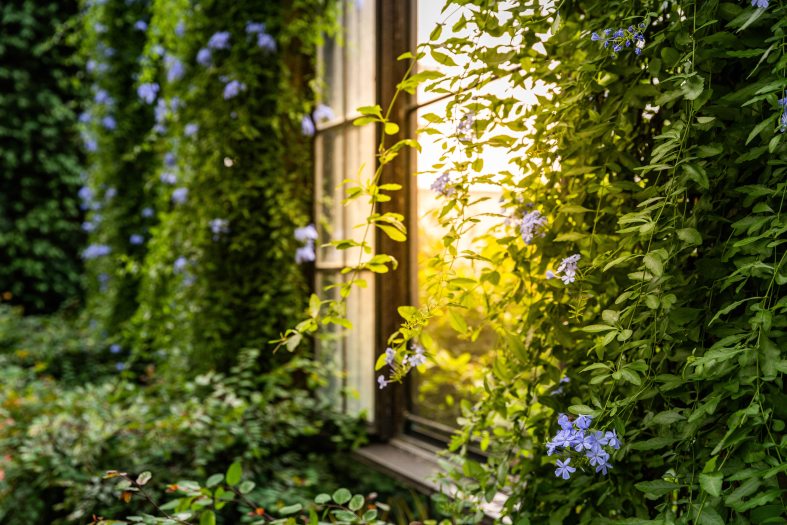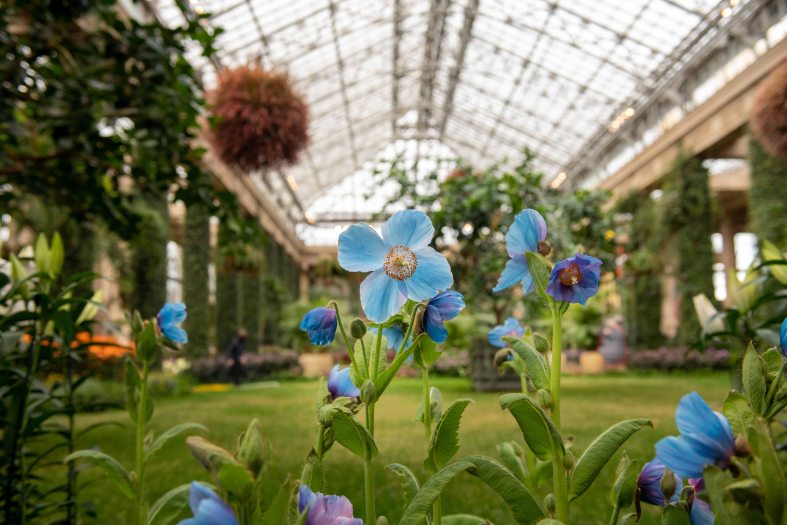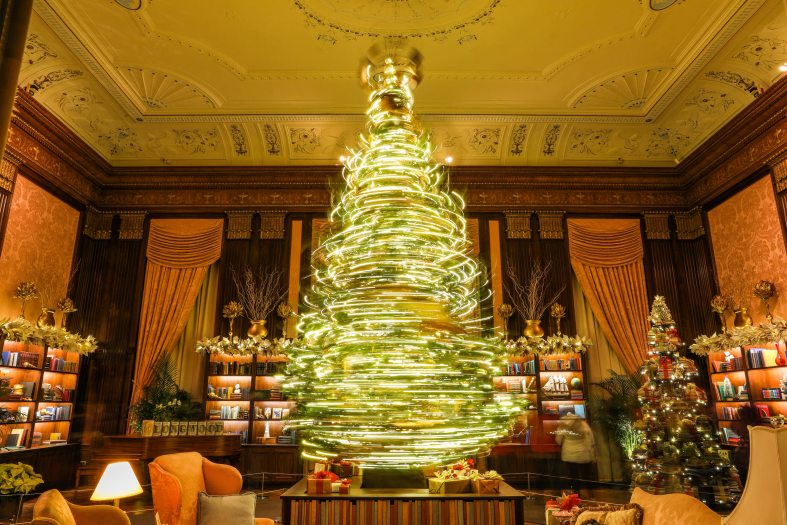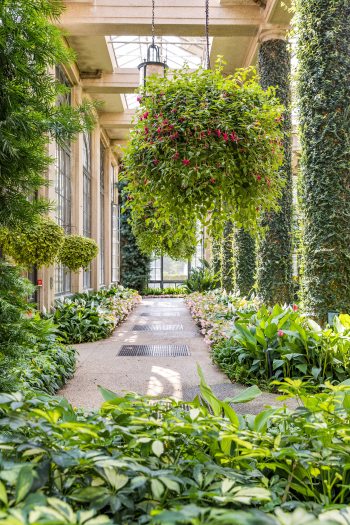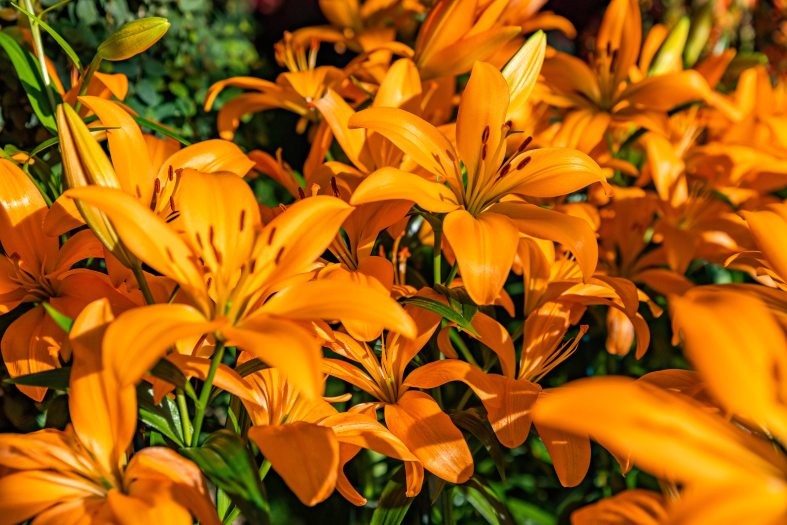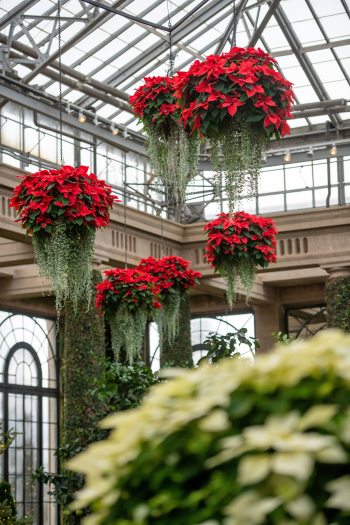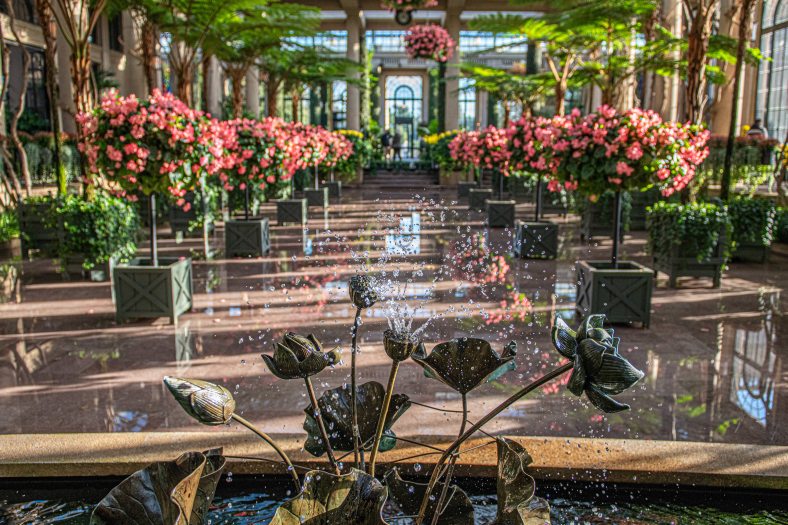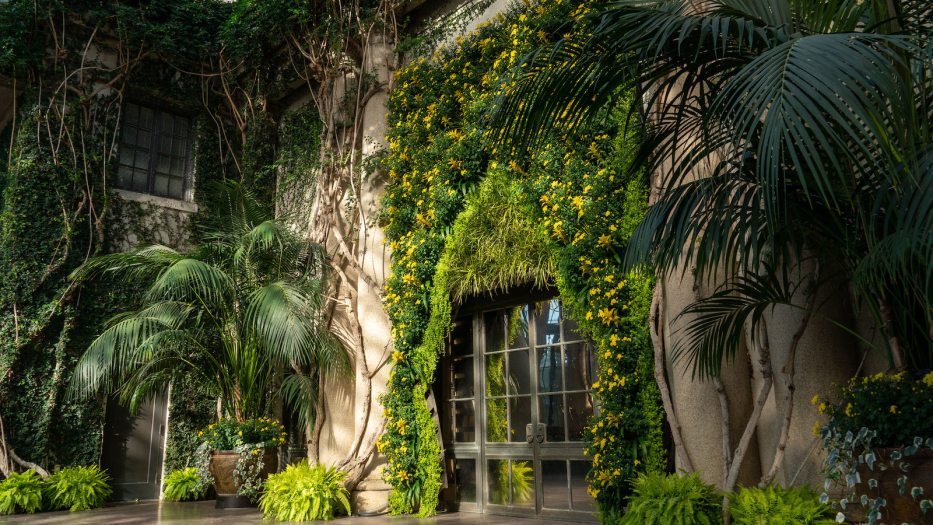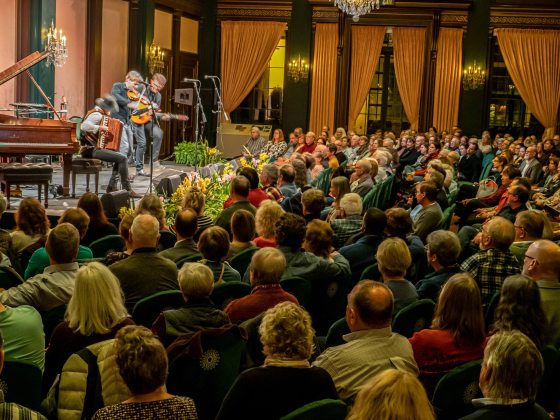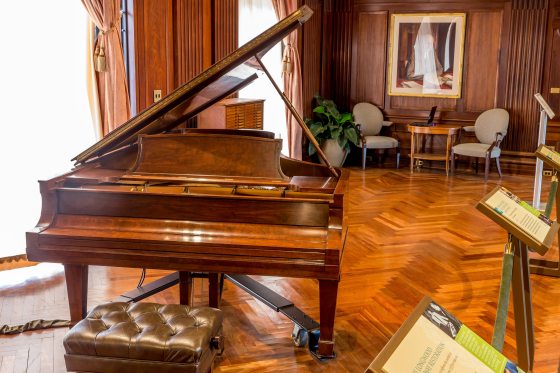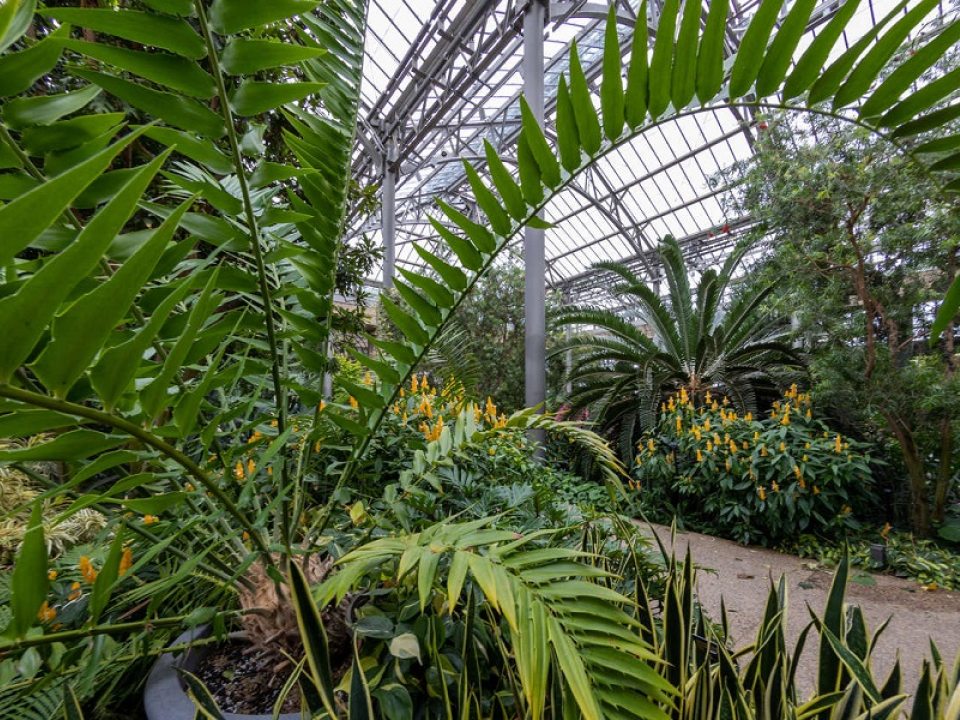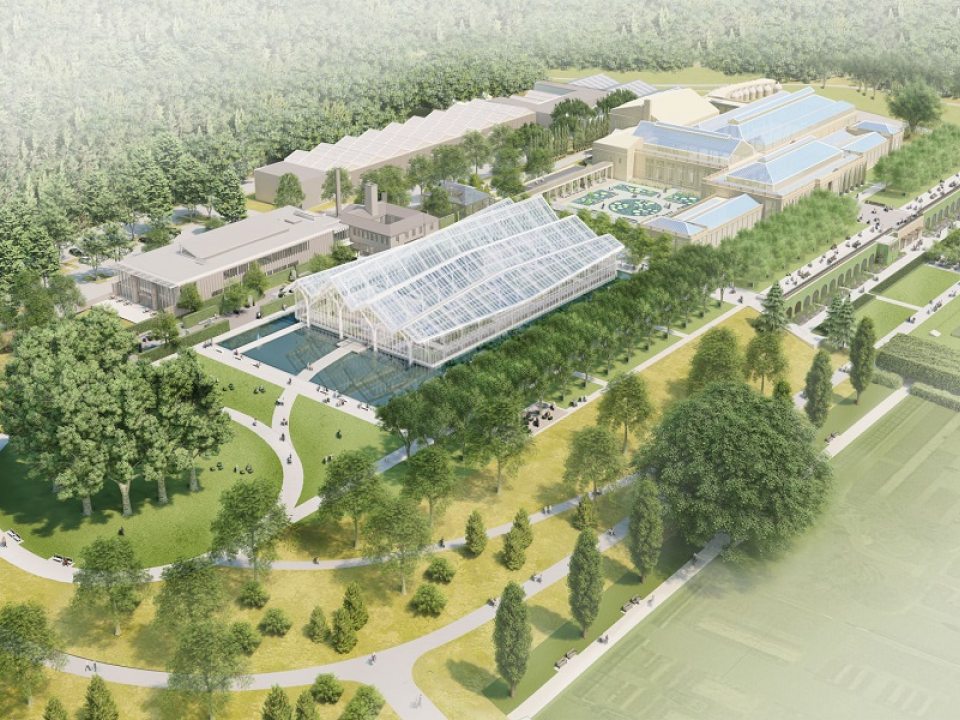There is something otherworldly about the Historic Main Conservatory, a place of perpetual bloom and elegant beauty. In this ever-changing space, familiar specimens flourish in uncommon ways alongside mature trees and massive hanging baskets of intricately grown flowers. Stroll past green lawns and a sunken marble pool, marveling at the lush, artful displays that celebrate abundance and grandeur. Here, we continue the legacy of our founder Pierre S. du Pont’s (1870-1954) passion for creating—and sharing—spectacular and unimagined beauty.
About This Garden
Since opening to the public in 1921, the Historic Main Conservatory has contributed to thousands of unforgettable visits for our guests. Neo-classical architecture, lavish attention to detail, and world-class plant collections come together to highlight what Longwood is known for: spectacle, in all its forms. While the Historic Main Conservatory's Orangery and Exhibition Hall indoor displays shine, the exterior of this majestic building stands out like a sparkling jewel in the landscape, lending views to the various vantage points throughout the grounds.
The Orangery
One of Longwood’s most iconic and stately spaces was inspired by Pierre’s desire to grow citrus fruit out of season. During a return trip from Hawai’i with his wife, Alice du Pont, in the winter of 1920, they stopped in Santa Barbara, California. There he purchased an impressive collection of mature specimens intended for his grand glasshouse at home, including tangerines, grapefruits, Valencia oranges, and navel oranges. All were planted in a grid-like pattern between the columns, which were adorned with creeping fig (Ficus pumila)—a plant that still grows there today.
Today, the Historic Main Conservatory features a kaleidoscope of flowers, bulbs, foliage, and clipped turf that exude color and fragrance—and change frequently through each of Longwood's seasons. There are several permanent residents of the Orangery, including bird-of-paradise (Strelitzia reginae), the pink Cherokee rose (Rosa 'Anemone') and several species of Podocarpus. Custom-made Palladian windows and bronze lanterns surround the space, showcasing Peirre's design aesthetic on large and small scale.
